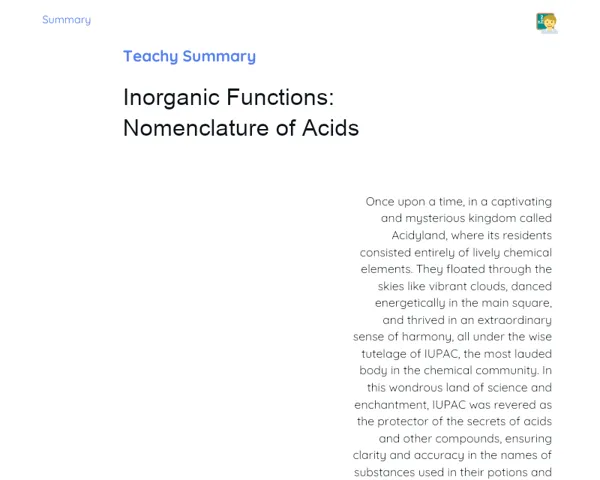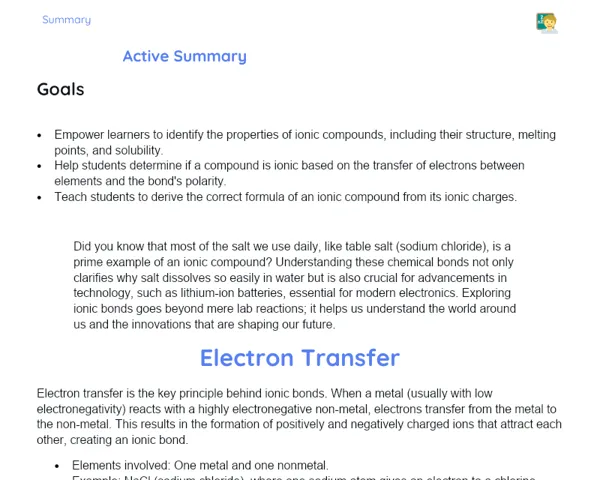Socioemotional Summary Conclusion
Goals
1. 🔍 Identify and correctly name the IUPAC nomenclature for phenols.
2. 🖊️ Differentiate the nomenclature of phenols from that of other organic compounds.
Contextualization
Did you know that phenols are present in many everyday products, such as medications and disinfectants? Understanding their nomenclature allows us to make better, more informed choices about what we consume and use daily. Plus, this knowledge helps us appreciate the role these compounds play in health and industry!
Exercising Your Knowledge
Definition of Phenol
Phenols are organic compounds featuring a hydroxyl group (-OH) directly attached to a benzene ring. This functional group gives phenols distinct chemical properties that set them apart from other organic compounds.
-
Hydroxyl Group: A functional group (-OH) linked to the benzene ring, vital for phenol properties.
-
Aromatic Structure: The presence of a benzene ring stabilises the molecule and influences its chemical characteristics.
-
Industrial Importance: Phenols are essential in the production of medicines, disinfectants, and cosmetics.
Structure of Phenols
The structure of phenols is defined by an aromatic ring connected to a hydroxyl group. The arrangement of this bond significantly impacts their physical and chemical properties.
-
Hydroxylbenzene: The simplest phenol, with an -OH group attached to a benzene ring.
-
Positional Isomerism: Different positional isomers of phenols exist, affecting their properties and applications.
-
Structural Representation: Drawing the structure of phenols accurately is crucial for understanding their reactions and uses.
IUPAC Nomenclature of Phenols
IUPAC nomenclature for phenols adheres to specific rules that facilitate clear identification of these compounds. The benzene ring serves as the base of the name, with the hydroxyl group always assigned the number one.
-
Aromatic Base: The name of benzene is the foundation for phenol nomenclature.
-
Numbering: The -OH group is always designated as 1, with other substituent positions numbered accordingly.
-
Practical Examples: Names like 2-methylphenol (ortho-cresol) and 4-nitrophenol illustrate the practical use of IUPAC rules.
Key Terms
-
Phenol: An organic compound with a hydroxyl group bonded to a benzene ring.
-
Aromatic Ring: A cyclic structure with stable resonance bonds.
-
Hydroxyl Group: A combination of oxygen and hydrogen (-OH) that imparts acidic characteristics to phenols.
-
Positional Isomerism: Variations in the position of substituents in a compound, leading to different properties.
-
IUPAC Nomenclature: A global system for naming chemical compounds.
For Reflection
-
How does understanding the nomenclature of phenols impact your choices regarding products you use daily?
-
How can you apply emotional regulation strategies when faced with challenging tasks such as chemical nomenclature?
-
Why is it important to correctly identify and name emotions during the learning process? How might this affect your academic performance?
Important Conclusions
-
🔍 Grasping the IUPAC nomenclature for phenols and distinguishing it from other organic compounds is crucial for identifying these substances in everyday and academic contexts.
-
✨ The aromatic ring and hydroxyl group are fundamental components in phenols, shaping their physical and chemical characteristics.
-
🤩 The ability to name and identify phenols has significant practical implications in health and industry, demonstrating the importance of the knowledge acquired.
Impacts on Society
Phenols are ingredients in many products we use routinely, including medications, cosmetics, and disinfectants. A solid understanding of their nomenclature enables us to recognise these compounds and make informed choices about what we consume. For instance, knowing how to read medication labels helps us understand the active ingredients and their potential effects on our bodies.
On an emotional level, learning about the chemistry of phenols can deepen our connection to the natural sciences and their applications. By understanding how specific chemical compounds impact our health, we foster a greater sense of social responsibility regarding chemical usage, promoting an informed and healthier way of living.
Dealing with Emotions
To manage your emotions while studying phenol nomenclature, try this exercise: First, recognise your feelings as you start studying, whether it's anxiety, curiosity, or something else. Next, understand the source of that emotion. Is it the subject's complexity? Pressure to perform well? Then, name that feeling accurately: Is it nerves or simply excitement? Express that emotion in a healthy manner, like discussing it with a friend or writing it down. Finally, regulate your emotions through deep breathing or taking short breaks while studying. This approach will help you stay focused and calm, enhancing your performance.
Study Tips
-
📚 Dedicate specific time each day to review the nomenclature of phenols and other organic compounds. Consistent practice is essential for success!
-
👩🏫 Form study groups with classmates to discuss the material and clarify each other's uncertainties. Teaching what you’ve learned reinforces your knowledge.
-
📝 Use mind maps and diagrams to visualise the structure of phenols and their variations. This makes learning engaging and helps retain information more effectively.



